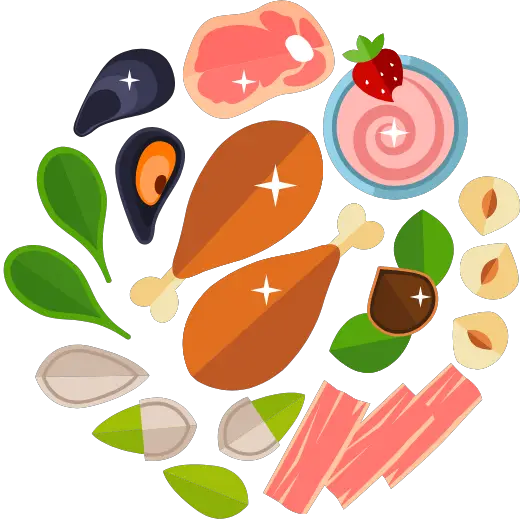In Japan, a packed lunch is rarely just a meal. It is a bento (弁当), a compact, carefully arranged culinary world that represents a rich cultural tradition of artistry, nutrition, and heartfelt care. More than a simple lunchbox, the bento is a form of communication, a daily ritual, and a tangible expression of love and effort. Its evolution from a practical meal for travelers to an intricate art form offers a unique insight into the Japanese appreciation for detail, balance, and seasonal beauty.
This guide invites you to unpack the layers of the bento box, to understand its history, its guiding principles, and the diverse forms it takes. By doing so, you can discover the profound meaning packed into these portable feasts.
A Brief History: From Samurai Rations to Culinary Art
The concept of a portable meal in Japan is centuries old. Its origins can be traced back to the Kamakura period (1185–1333), when cooked and dried rice called hoshi-ii was carried by samurai and travelers. However, the bento as we know it began to flourish during the culturally rich Edo period (1603–1868). Theatergoers would carry elegant, stacked lunchboxes called makunouchi bento (“intermission bento”) to enjoy during performances.
The Meiji period (1868–1912) saw the rise of the railway system and with it, the birth of the ekiben (“station bento”), featuring regional specialties sold at train stations. Around the same time, bento became a staple for students and teachers. After a decline in the post-war era due to the implementation of school-provided lunches, the bento saw a major revival in the 1980s, re-emerging as a cultural phenomenon that celebrated both convenience and handmade artistry.
The Philosophy of Packing: A Washoku World in Miniature
A well-crafted bento is a microcosm of the principles of Washoku (traditional Japanese cuisine). It is not just about filling a box, but about creating a balanced, appealing, and practical meal.
- Nutritional Balance: A key principle is creating a complete and healthy meal. A common guideline is the 4:3:2:1 ratio: 4 parts rice (carbohydrates), 3 parts main protein (fish, meat, tofu), 2 parts vegetables (vitamins and minerals), and 1 part pickles or fruit for flavor and preservation. This ensures a satisfying and nutritionally sound meal.
- Visual Harmony and Aesthetics: The bento is a feast for the eyes. This is achieved through:
- Color Balance: Incorporating the five colors of Washoku (red, green, yellow, white, and black) makes the meal visually exciting and nutritionally diverse.
- Thoughtful Arrangement: Food is packed tightly to prevent shifting. This is an art in itself, using different shapes and sizes to create an appealing mosaic. Silicone cups, lettuce leaves, or decorative plastic dividers (baran) are used to separate flavors and colors.
- Cutting Techniques: Vegetables and sausages are often cut into decorative shapes like flowers or animals, adding a touch of whimsy and demonstrating the maker’s skill and care (te-ma).
- Practicality and Food Safety: Since bento are typically eaten at room temperature hours after being prepared, food safety is paramount. Foods are cooked thoroughly and allowed to cool completely before packing to prevent condensation and bacterial growth. Ingredients that hold up well, such as simmered vegetables, grilled meats, and pickled items, are favored over those that may spoil or become soggy.
The Diverse World of Bento
The bento is not a single concept but a vast category encompassing many styles, each with its own purpose and character.
Kyaraben (Character Bento – キャラ弁)
The most famous modern evolution of the bento. In kyaraben, food is meticulously crafted to look like popular characters from anime, manga, video games, or adorable animals. This style is most often made by parents to encourage young, picky eaters and to send a fun, loving message to their children. It is a remarkable display of creativity and patience.
Ekiben (Station Bento – 駅弁)
A culinary highlight of train travel in Japan. Each region and major train station boasts its own unique ekiben, which showcases local specialties. Traveling through Japan can become a gastronomic tour simply by sampling the different ekiben along the way. They are a form of culinary tourism, allowing travelers to taste the pride and flavor of a region from their seat on the train.
Makunouchi Bento (幕の内弁当)
A traditional and more formal style of bento. It typically features rice formed into small,俵-shaped bales, accompanied by a variety of small, elegant side dishes like grilled fish, rolled omelet (tamagoyaki), kamaboko (fish cake), and simmered vegetables. It reflects a classic, balanced aesthetic.
Aisai Bento (愛妻弁当 – “Loving Wife” Bento)
This term refers to a bento made by a spouse for their partner. It is a powerful symbol of care and affection in a relationship. While it can be a simple daily lunch, it can also be an elaborate creation with messages of encouragement spelled out with seaweed, a tangible expression of love and support.
Bento as a Form of Communication
Ultimately, the bento is a non-verbal language. The time, effort, and thought invested in creating a bento communicate a powerful message from the maker to the eater. For a child, it is a daily reminder of a parent’s love and a wish for them to eat well and be healthy. For a partner, it is a gesture of appreciation and support. The care taken in balancing the flavors, arranging the colors, and adding a small decorative touch speaks volumes.
The Japanese bento transforms the mundane act of packing a lunch into a meaningful ritual. It is a beautiful and delicious tradition that reminds us that food can be a powerful medium for expressing care, creativity, and love. We encourage you to see your own packed meals not just as a convenience, but as an opportunity to bring a little more mindfulness and artistry to your day.
